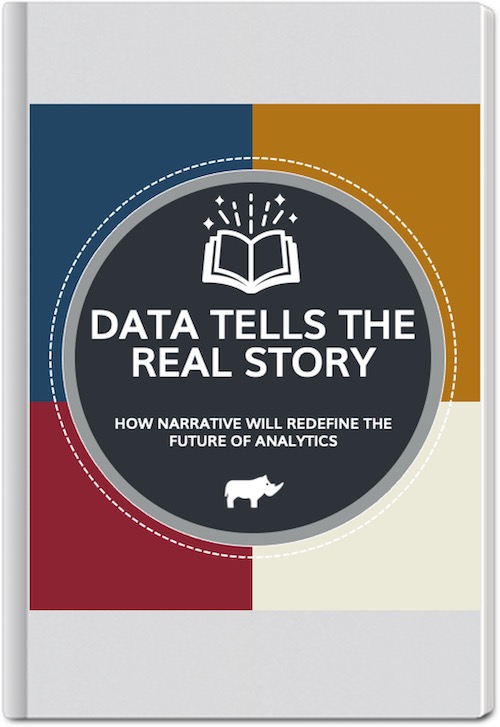Analytic users want to share meaning, not just a set of numbers.
For over 20 years, dashboards and data visualisation have been considered the best ways to explore, communicate and act on business data. However, as our data needs evolve in scope, our expectations on their capability will also require adjustment.
Dashboards originally started life as graphical interfaces. Designed to show a one-page snapshot of business performance, answering key questions like:
- What is the current operational performance?
- Are there any cost efficiencies to be had?
- Which actions can I take?
Today, data is more complex and growing faster than ever before, yet many business users are still expected to manually extract data and find answers from high-level charts and dashboards. Unfortunately, these formats can’t always convey the full story behind the numbers or provide guaranteed actionable insights.
Data alone rarely makes sense – it requires context! It’s the story behind the numbers, that helps us understand.
We need more diverse ways to find and share meaningful stories. For this reason, data storytelling has become an influential new driver of analytics adoption.
Data Storytelling employs narrative techniques, pairing them with credible quantitative and qualitative data. This inspires better engagement where users acquire a depth of meaning that leads to proactive decision making. If the process is automated, this means everyone has access to important business information when they need it.
Business professionals need quick access to data-led insights
When attempting to dissect and analyse data for the purposes of making business decisions, data storytelling is the detailed explanation of what the numbers represent. People are likely to grasp narration far easier than sharing spreadsheets full of numbers or charts visualising key metrics.
Modern day Business Intelligence tools are now likely to include augmented analytic features. By automating aspects of the narrative process, users will find it easier and more efficient to analyse data and share relevant stores.
"25% of business leaders view data storytelling as one of the most important, emerging capabilities they want to have when selecting a new analytics solution."
Data-led stories solve manual processes
Automated data storytelling is gaining attention due to its ability to solve three emerging challenges of the largely human-driven, manual process that exists today:
- Stories need to be based on more than just human bias
- Data literacy and self-service limitations
- Scaling data storytelling across the business
Of course, this all hinges on having Business Intelligence software able to apply these technologies and generate stories in a way that does not seem too algorithmic to the reader.
If you want to know more about the shift from static dashboards to contextual insights
Click here to download your free eBook
This educational guide will help you understand:
- What automated data storytelling is
- How augmented analytics and data storytelling benefit organisations
- Why leveraging automated narrative is the future of analytics

